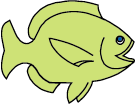 Exploring Lanai
Exploring Lanai
 Exploring Lanai
Exploring Lanai
Goals:
1. To give students general background on Lanai, Molokai's neighbor, and to understand the differences and similarities between the two. (This lesson will be handled the day after "Welcome to Molokai.")
2. To find pictures of underwater life on the Internet and understand how important scuba diving is to Hawaiians.
3. To explore their artistic talents and recognize how colorful the underwater world can be.
Resources/Materials:
1. Birnbaum's 95 Hawaii by Alexandra Mayes Birnbaum (1994). New York, N.Y.: HarperCollins Publishers (ISBN 0-06-278165-0)
2. Insight Guides Hawaii by Scott Rutherford (update editor) (1994). Singapore: Hofer Press Pte Ltd (ISBN 9-62421-006-3)
3. Internet access and the following sites:
http://www.maui.net/~scuba/lanaimap.html This is a link to nine different underwater pictures.
http://www.maui.net/~scuba/sgtminor.html
http://www.maui.net/~scuba/armchair.html
http://www.maui.net/~scuba/turtlehaven.html
4. Scuba diving videos. The following can be purchased through the Internet:
Hawaiian Reef Fish Madness (53 minutes) and Hanauma: A Day at the Bay (45 minutes) can be ordered through http://www.hotspots.hawaii.com/fishman.html
5. Posterboard and colored markers or pencils.
Time:
Total time should be about 1.5 hours. After the short introduction, the Internet portion of the lesson should take no more than 15-20 minutes. The length of the video will vary according to which one you choose, so a longer video could alter the lesson to 2 hours.
Procedure:
1. Lecture for 10 minutes about the background of Lanai, using information from the Birnbaum and Insight Guides books.
2. Hand out sheet of Lanai dive sites that all students are expected to check out.
3. Have students go to computers and look at each site.
4. Watch video about diving in Hawaii.
5. Have each student create a drawing of the fish, eels and other aqualife seen either in the video or on the Internet. In addition, students will write one paragraph about either their drawing or their favorite visual part of the lesson.
Assessment:
1. Drawing evaluations must be completed and show effort. Teacher will make effort determination and give grade of yes/no.
2. Paragraph evaluation must reflect material presented and contain personal thoughts. Teacher will assess the writings on a 10-point scale (rubric included). (Criteria for success = 8 pts. out of 10.)
Curricular strands:
1. Art: This is a visual lesson and allows the students a hands-on chance to create a picture or drawing of their own.
2. Language arts: Developing a short essay, using new information and their preferences.
Possible extensions:
1. Bring in a local scuba diver to explain how it is done and to tell about some of the best dives he/she has made.
2. Take students who can swim to a local pool and have them try swimming with a snorkeling mask and fins.
Go to Welcome to Molokai
Go to Two Highways
Go to Schedule of Lessons